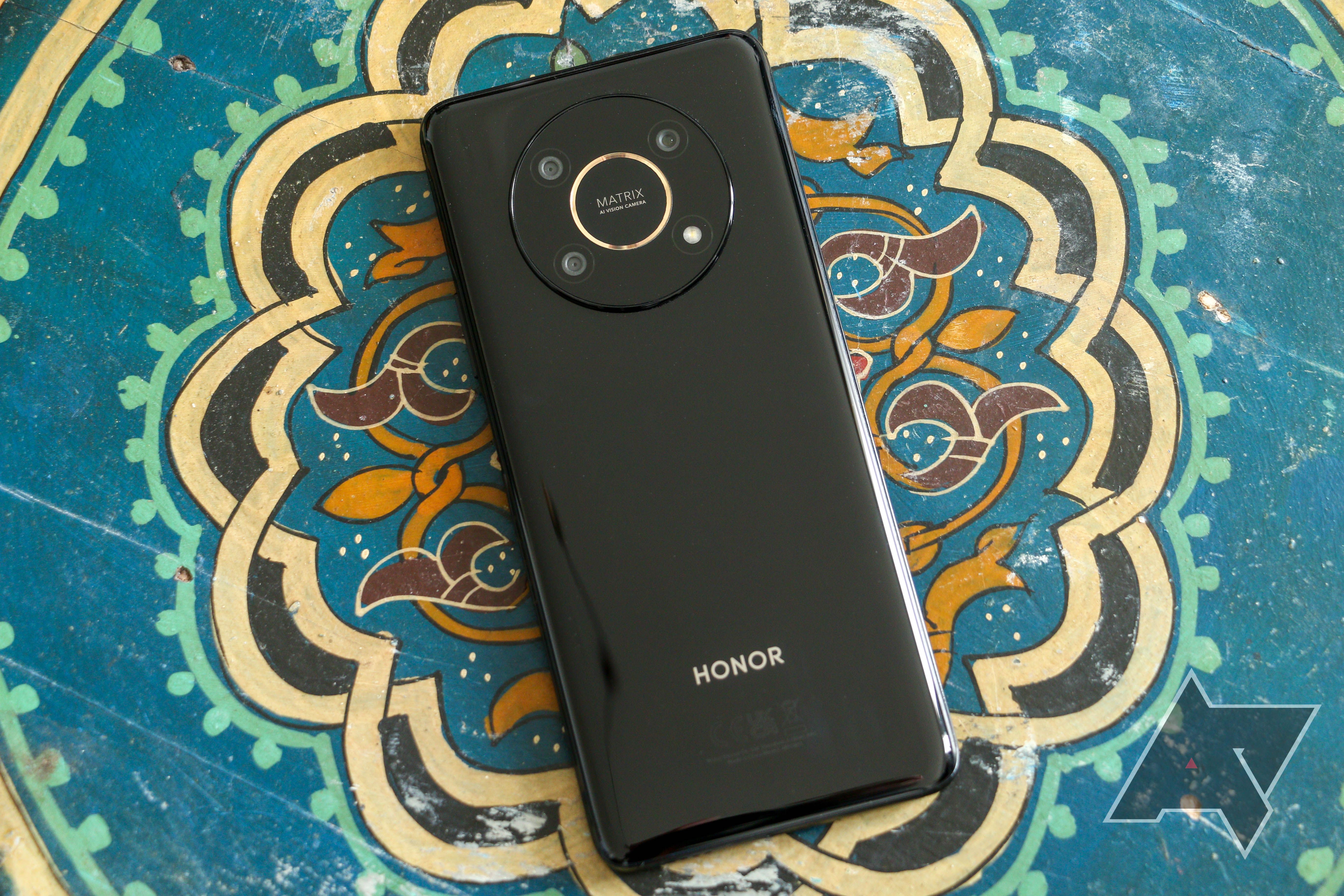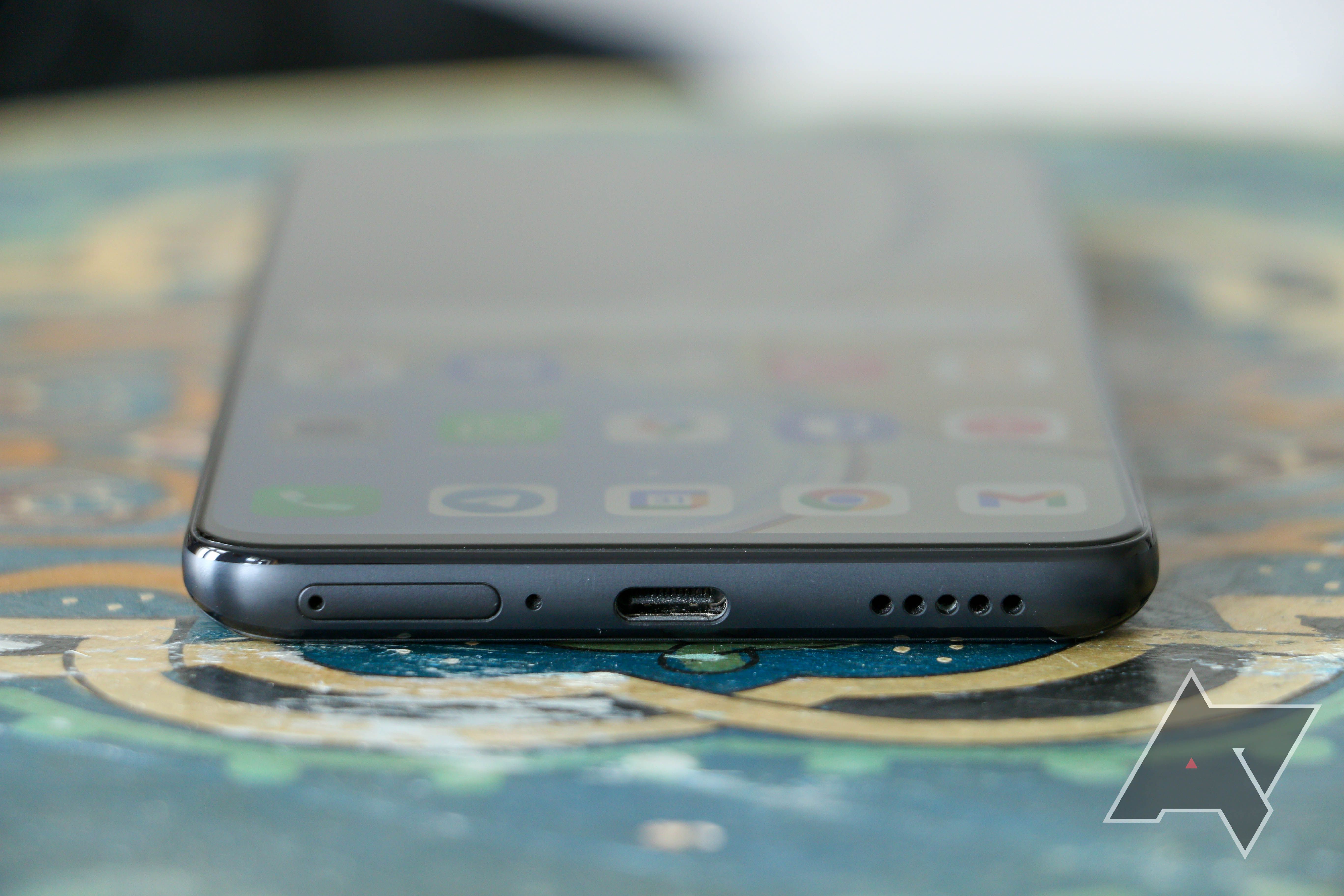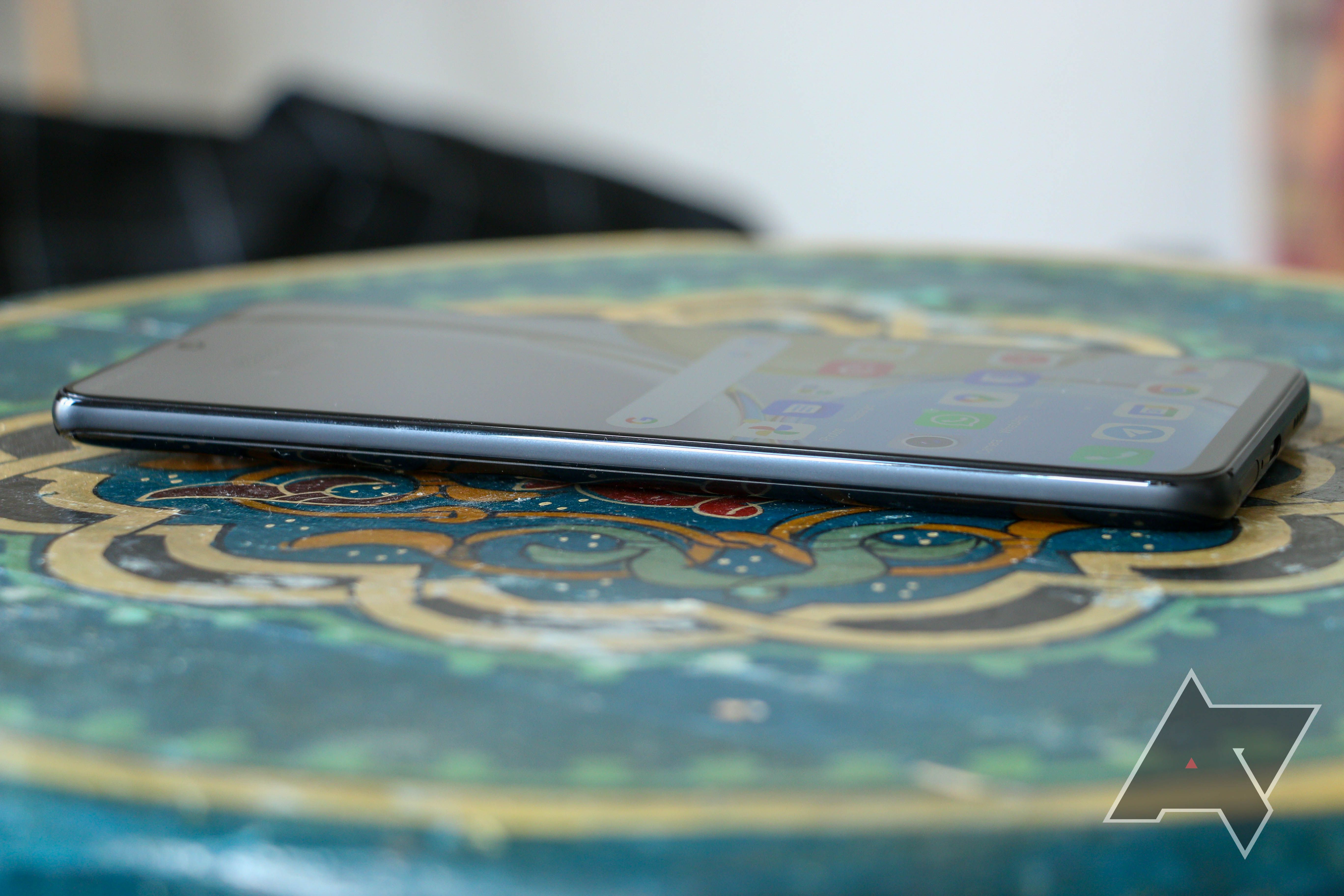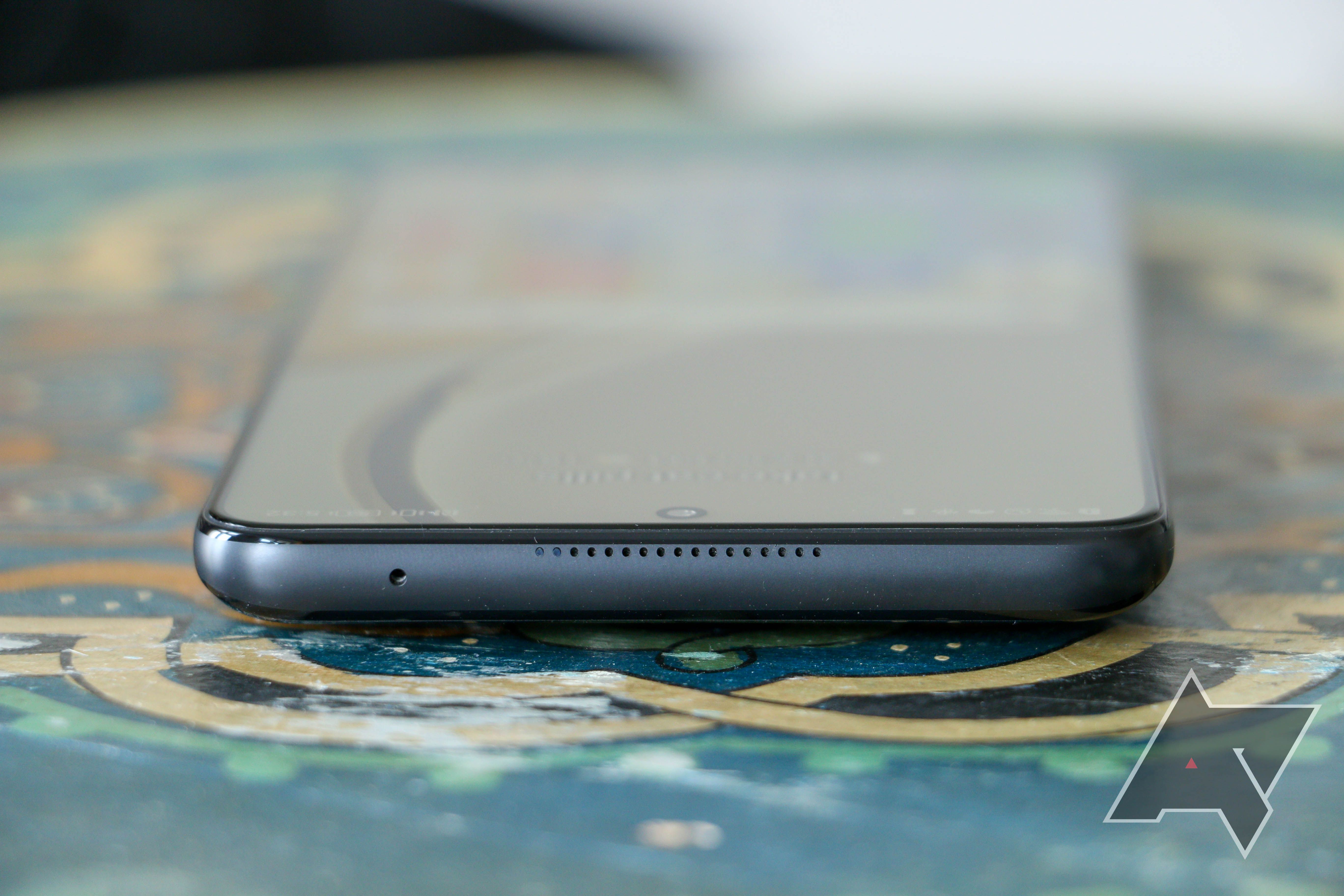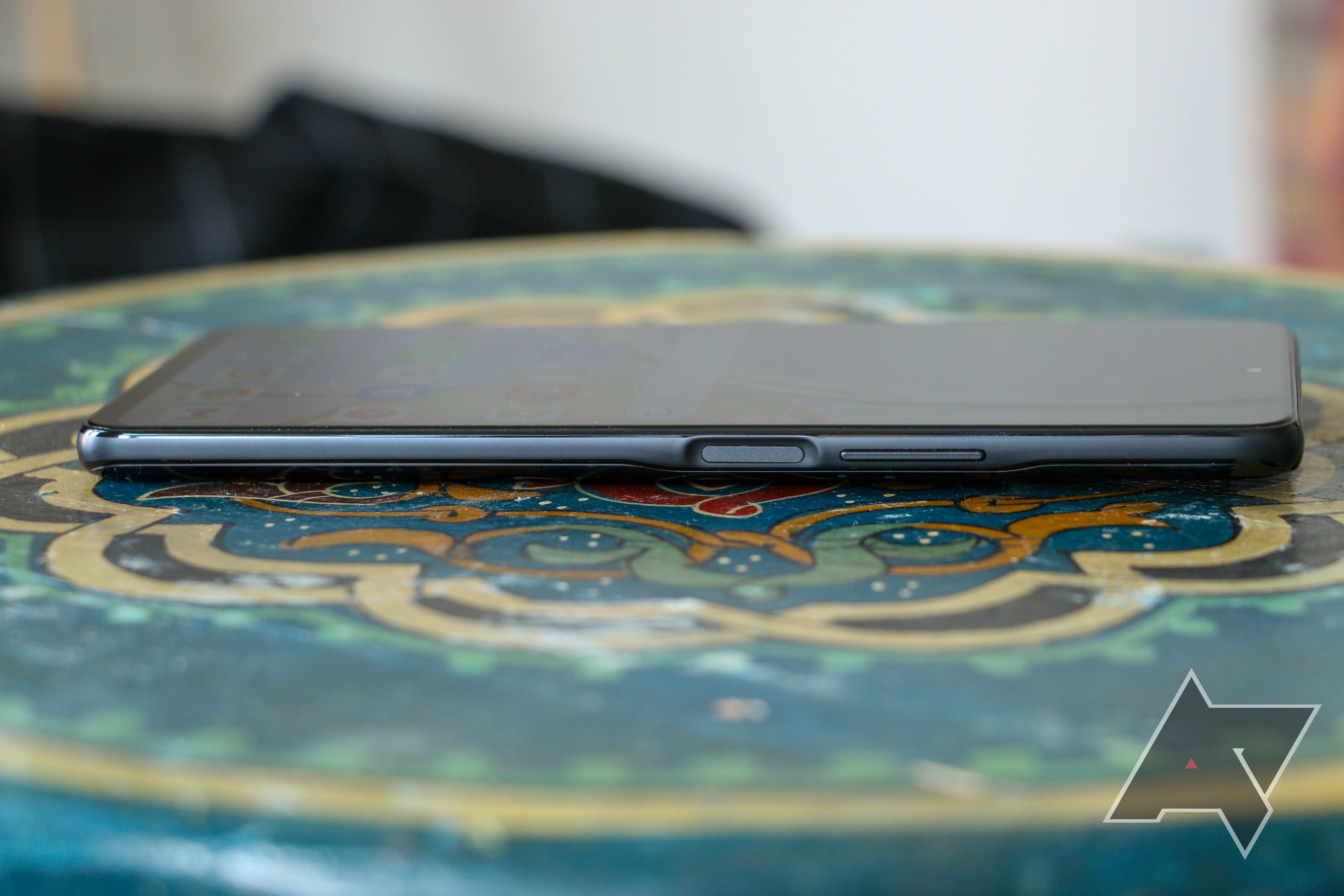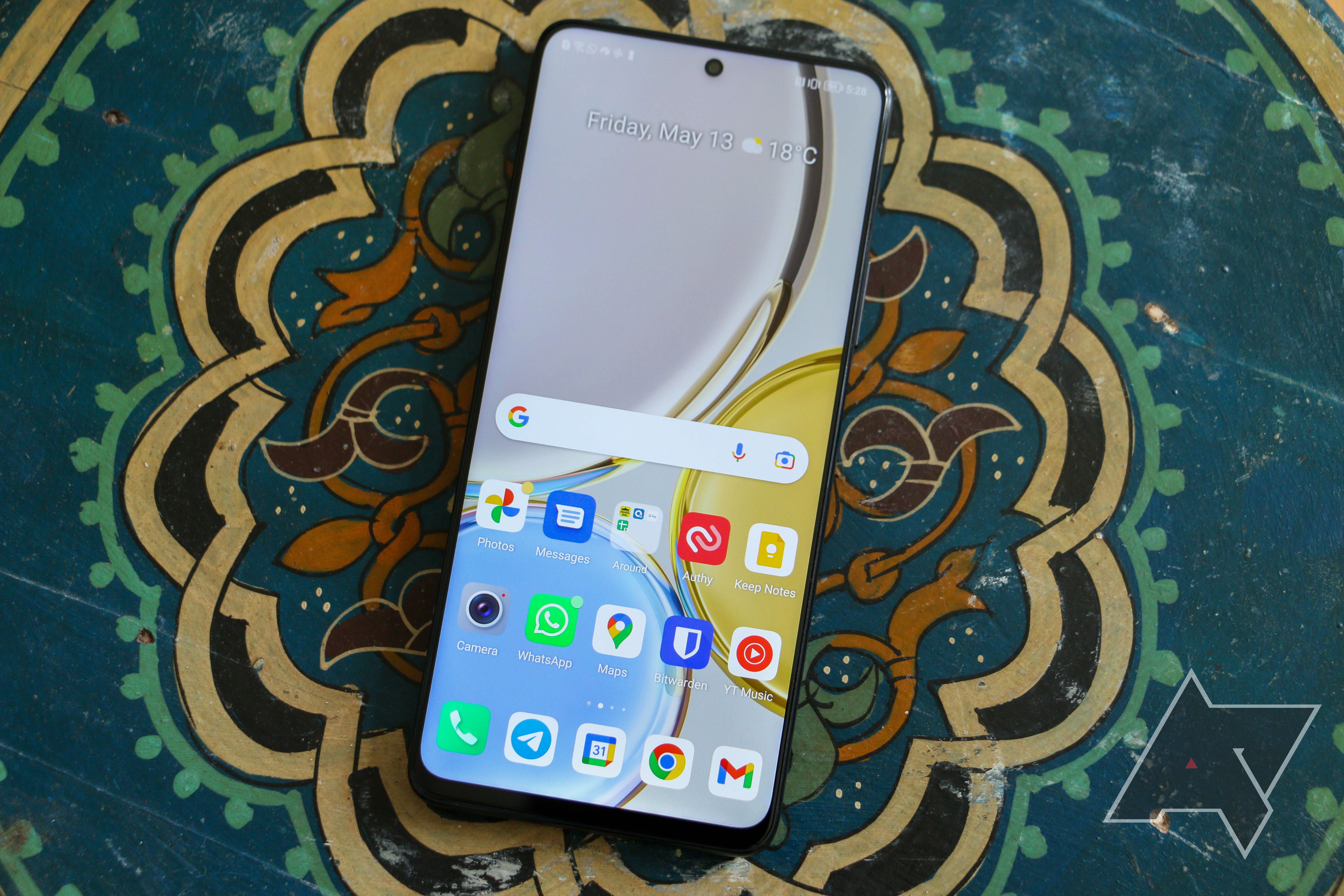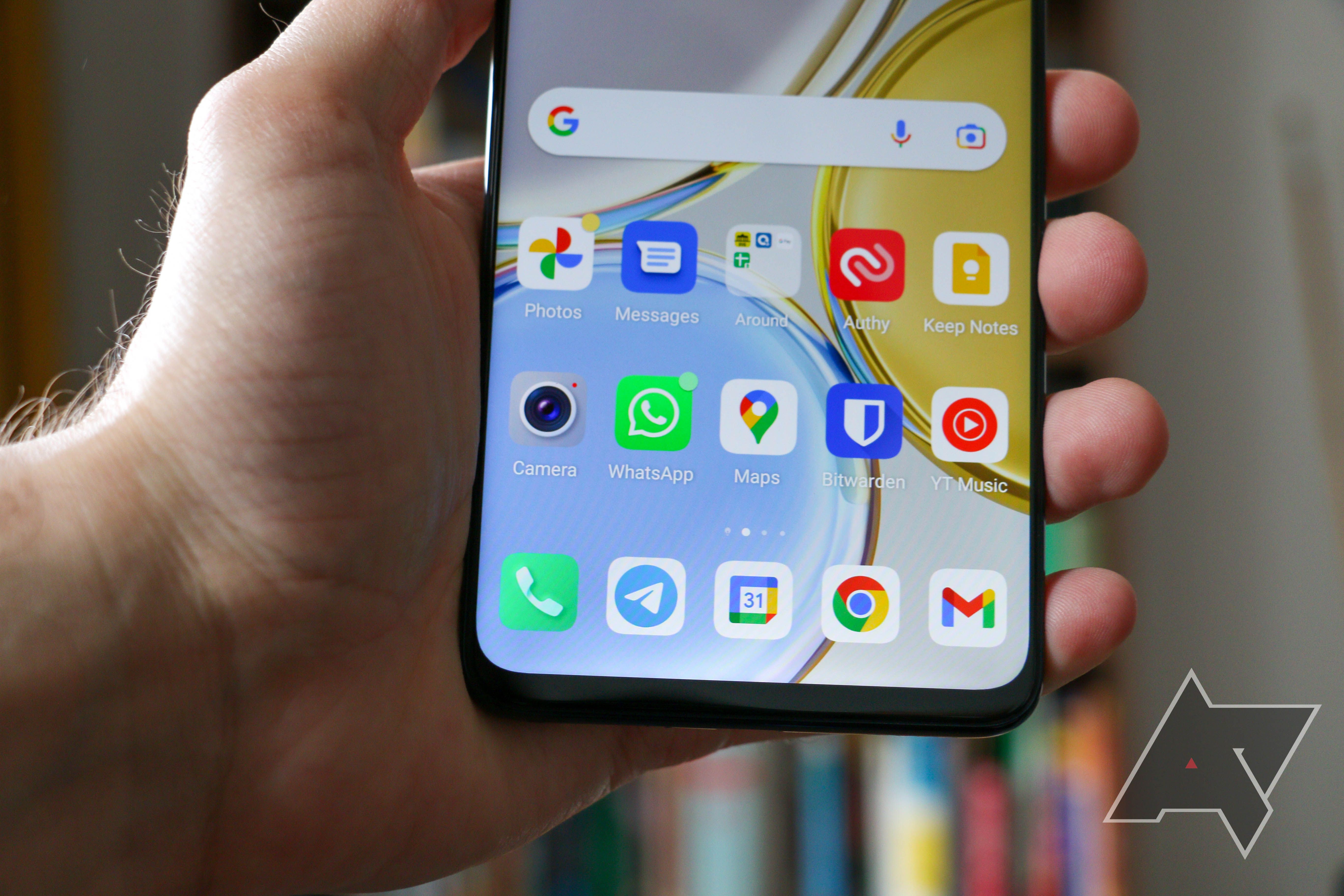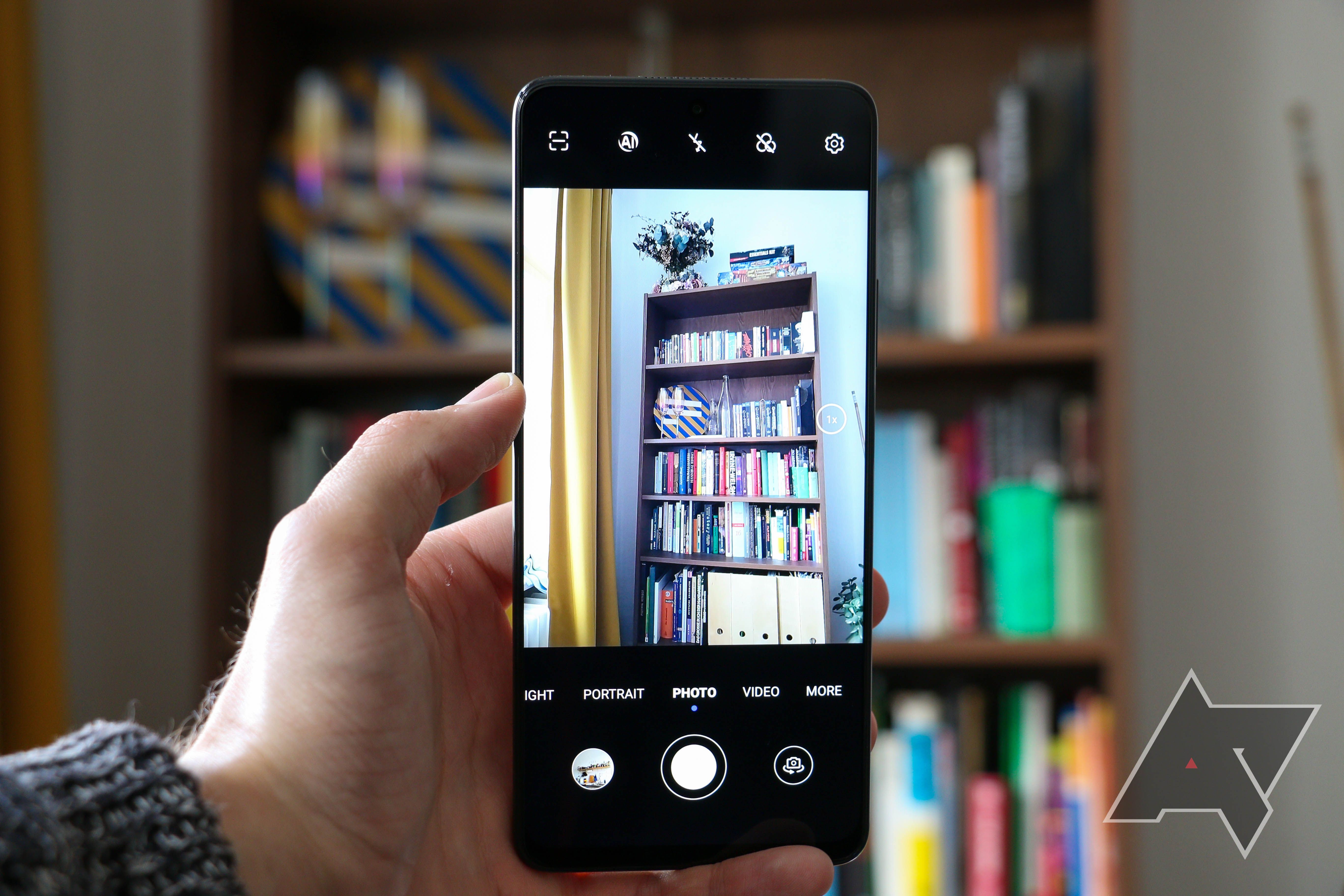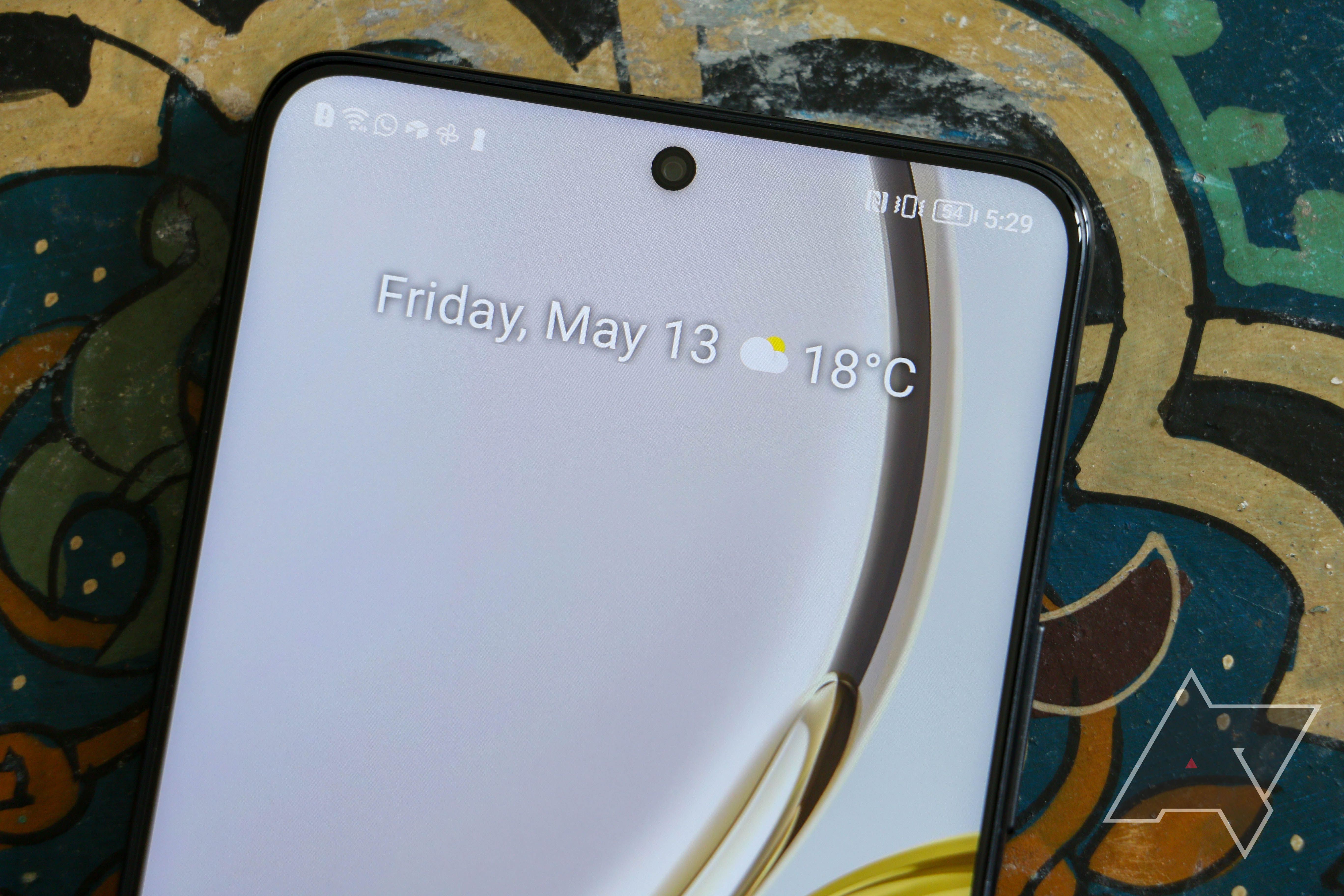Honor managed to break away from its former parent company Huawei, which has largely been forced out of Western markets due to US sanctions. The ex-subsidiary now stands on its own two feet and has big plans for the future, hoping to conquer the high-end market with upcoming flagships like the Honor Magic4 Pro. However, to become broadly successful, the company needs to offer enticing products across all price points, and the Honor X9 5G (or Magic4 Lite, as it’s called in the EU) could hit the sweet sub-$300 spot.
Honor X9 5G
The Honor X9 5G is an excellent budget Android phone that falls flat on its face in the one department that almost all budget handsets struggle with — photography.
- SoC: Snapdragon 695
- Display: 6.81-inch 19.9:9 120Hz 2388 x 1080 LCD
- Battery: 4800 mAh Lithium Polymer
- Ports: USB-C, Dual nano SIM slot
- Operating System: Android 11 / Magic UI 4.2
- Front camera: 16MP f/2.45
- Rear cameras: 48MP camera (f/1.8), 2MP macro (f/2.4), depth sensor
- Connectivity: 5G, Wi-Fi 5, Bluetooth 5.1
- Others: Case included in box
- Dimensions: 166 x 76 x 8mm
- Colors: Titanium Silver, Ocean Blue, Midnight Black
- Weight: 189g
- Charging: 66W fast charging with included charger
- IP Rating: no
- Price: Starting at £300 / €350
- RAM and Storage: 6GB+128GB, 8GB+128GB, 8GB+256GB
- Outstanding battery life paired with fast charging
- Better performance than you would expect at this price
- 120Hz LCD panel that only has a few small issues
- Two of the three cameras here are superfluous
- Abysmal camera software
- Shipping with sometimes sluggish feeling Android 11 and Magic UI
Display, hardware, what's in the box
The Honor X9 makes a great first impression, at least when considering its sub-$300 price point. It’s just a tad smaller than the Pixel 6, and it features the same “eye of muse” circular camera bump seen on past Honor phones, like the Honor Magic4 Pro and 50 Lite.
While the overall appearance is in line with the rest of Honor’s lineup, the selected materials are decidedly less premium. The glossy back plate and the matte sides are made of plastic while the front sports a noticeable chin at the bottom, breaking up the otherwise clean look. The phone still feels solid in the hand with its gently curved back, even if plastics will inevitably get greasy and scratched much faster than high-quality glass. Honor’s glossy plastic definitely isn’t as pretty as OnePlus’ choice of a matte finish for the Nord N20, too.
The screen comes with a pre-applied screen protector that feels durable and almost like it’s part of the phone itself (it’s very hard to pry off), and it doesn’t interfere with the picture quality too much. You will notice a difference once you take it off, though. It’s still clear that the 6.81-inch LCD panel isn’t the highest end out there. While it does support 120Hz, which is rare at this price point, the viewing angles are disappointing, and I wish it would get just a tad brighter for outdoor usage. The stereo speakers were a pleasant surprise, though — they definitely make videos enjoyable without headphones. Things are different for music though, with the X9 sounding tinnier and hollower than I’d like.
When it comes to further hardware, the X9 makes for an ambivalent picture. You only get a USB-C port on the bottom, with no headphone jack to be seen anywhere. And while it supports dual SIM 5G, it doesn’t have a microSD card slot. However, it comes with 128GB of onboard storage (and 6GB of RAM in the cheapest version, while we had the 8GB variant in for review), which should be enough for many people. Honor also bundles the X9 with a transparent plastic case and a 66W charger with a cable. It’s clear that many high-end technologies are finally trickling down to budget phones.
Software and performance
The Honor X9 5G ships with Android 11 out of the box, which is sad given that Google is already preparing to release Android 13 later this year. On top of that, Honor has added its custom Magic UI 4.2 skin, which is quite the departure from standard Android conventions — even more so than Xiaomi’s MIUI. This might not be a problem if you come from another Honor or Huawei phone, a Xiaomi handset, or an iPhone, but many people will have to adjust to Honor’s quirks here.
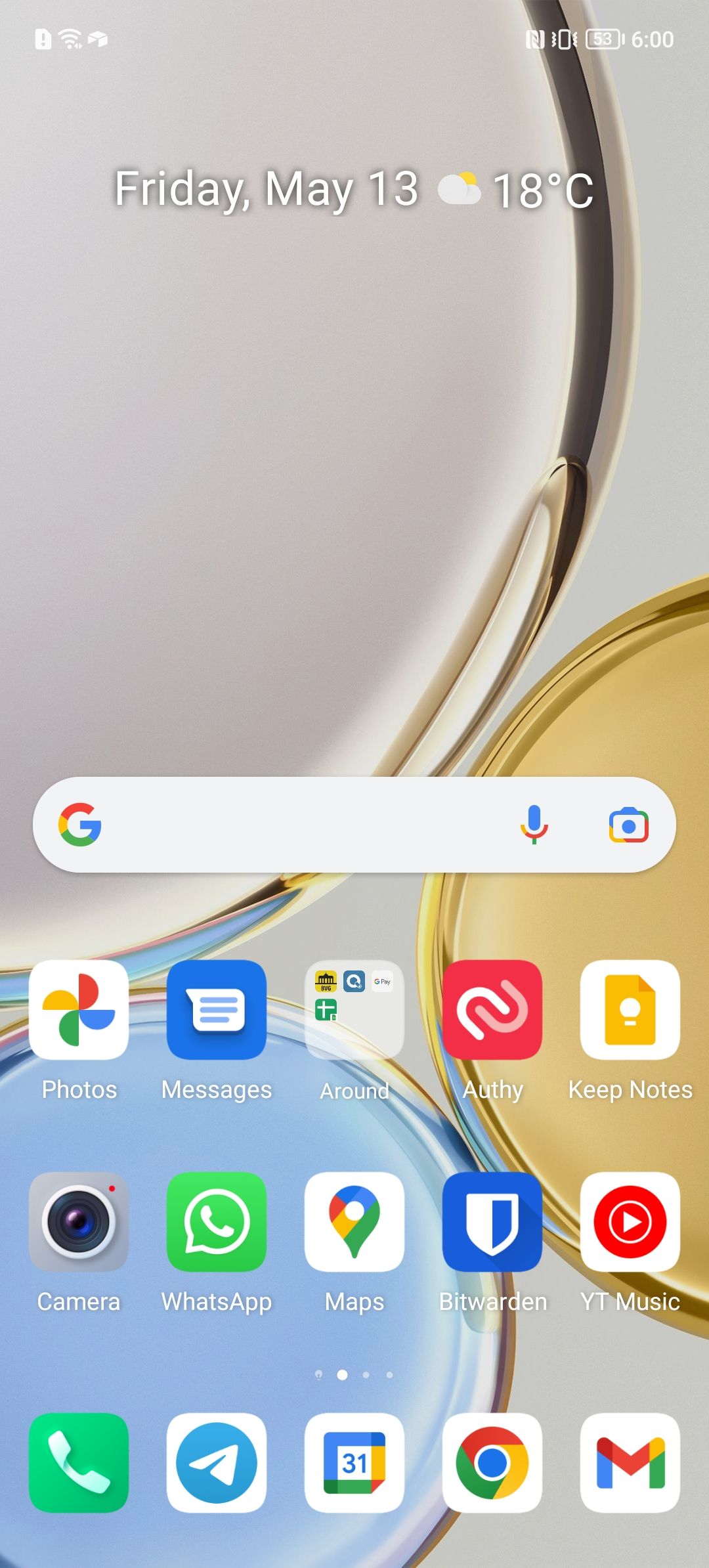
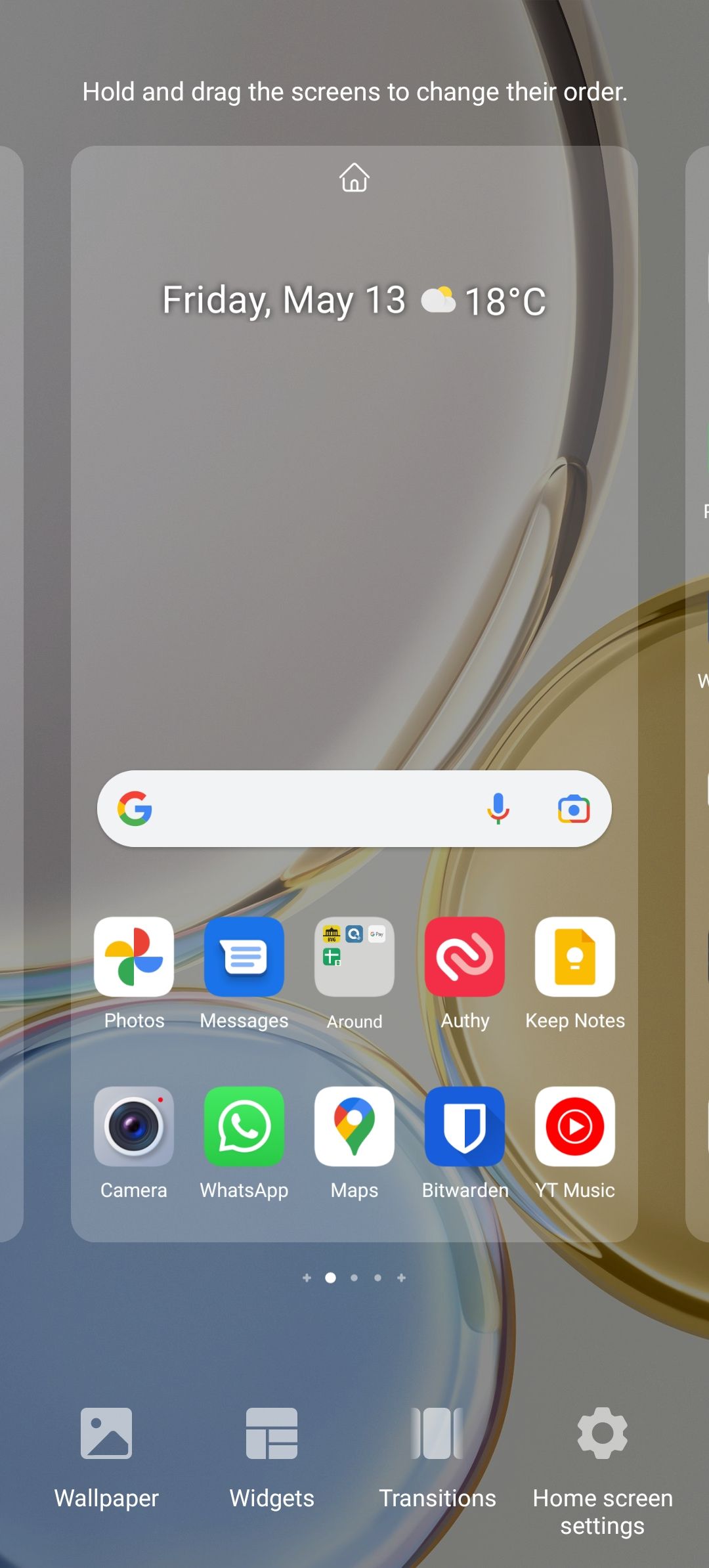

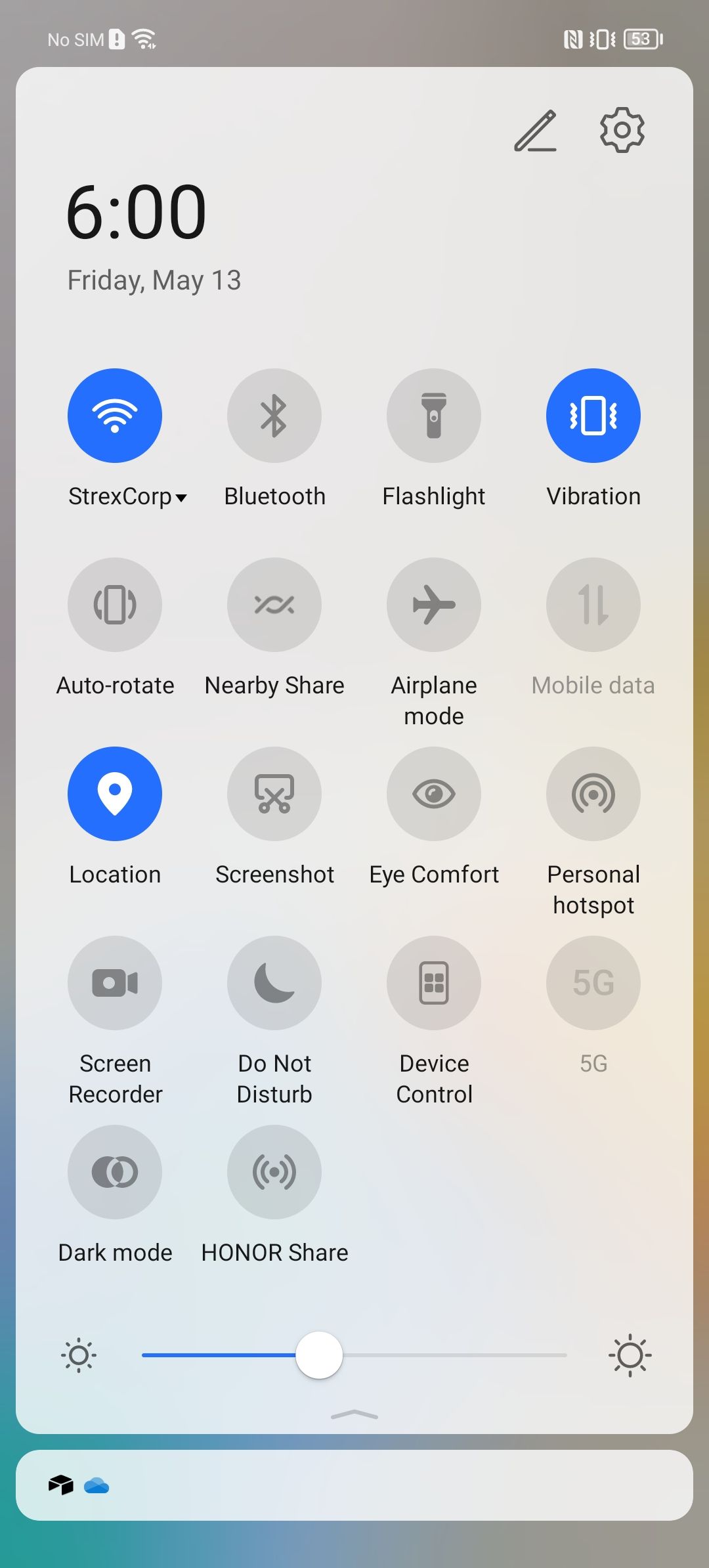
By default, Magic UI uses a home screen layout without an app drawer, but you can change this in system settings, where you also have access to a variety of different themes and icon packs. Sadly, Magic UI doesn’t support third-party icon packs, though, with its own icon options only applying to Honor apps. Possibly the most annoying thing about the launcher is that pressing the home button takes you to a different page based on which app you just left. That means if you enter, say, Telegram from the notification panel while you’re on your rightmost home screen, you might be thrown to a seemingly random home screen panel with Telegram on it when you try to go home. Jarring.
Honor changes little things here and there that feel a lot like changes for the sake of differentiation, but they end up just plain confusing. You can’t access the app info screen or widgets by tapping and holding a home screen icon — you need to head to the Recents app overview to get to the former or use a minimize gesture on the home screen to get to the latter. You also can’t tap and hold notifications to block or tweak them — instead, you’ll have to swipe to the left just a little to bring up the snooze and settings shortcuts. And then there’s the volume rocker, which lacks the ability to control your ringer mode (silent, vibration, sound) — you need to tap a quick settings toggle in the notification shade to do that. There are some omissions that seem arbitrary, too. For example, the X9 doesn’t feature an automatic dark mode based on the time of the day, forcing you to either change it manually every sundown or just stick with dark or light mode indefinitely.
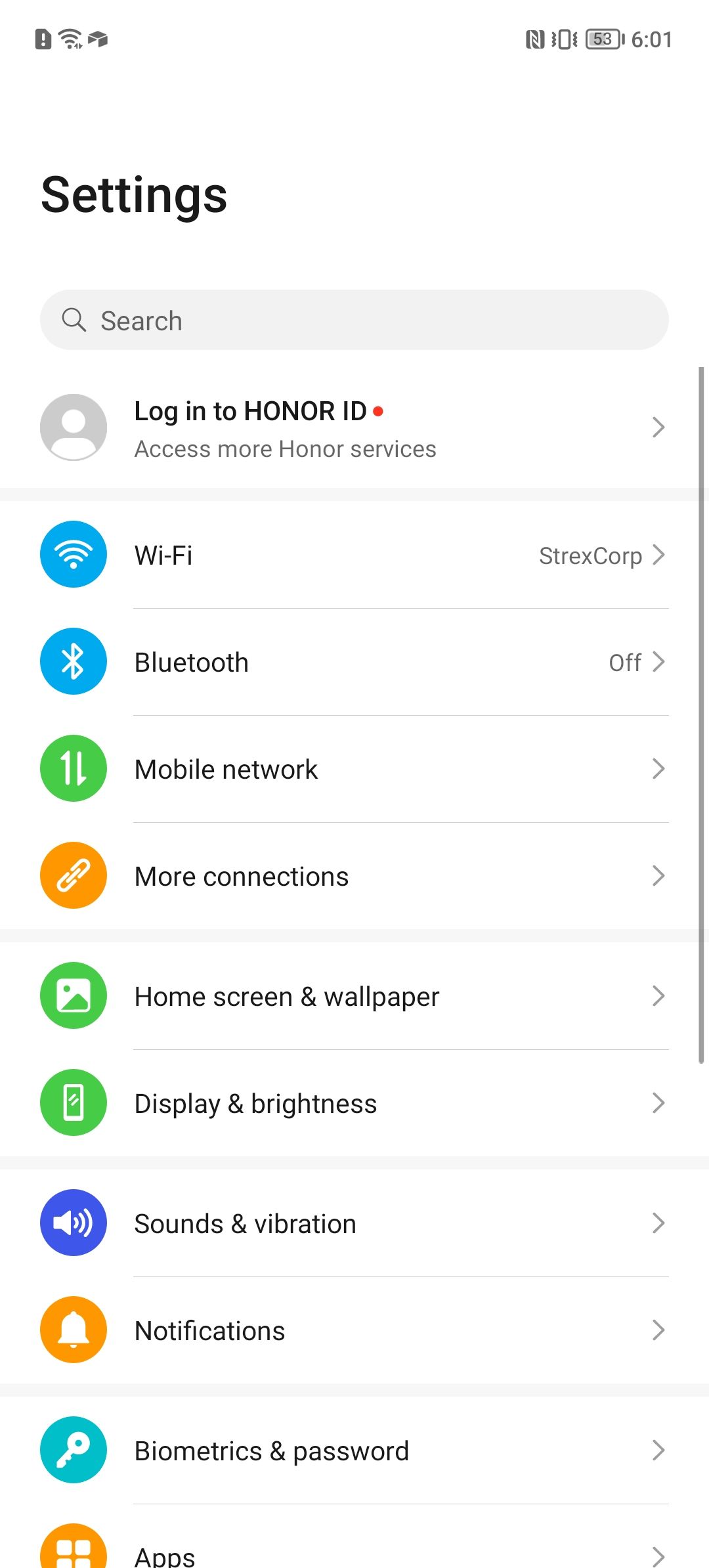
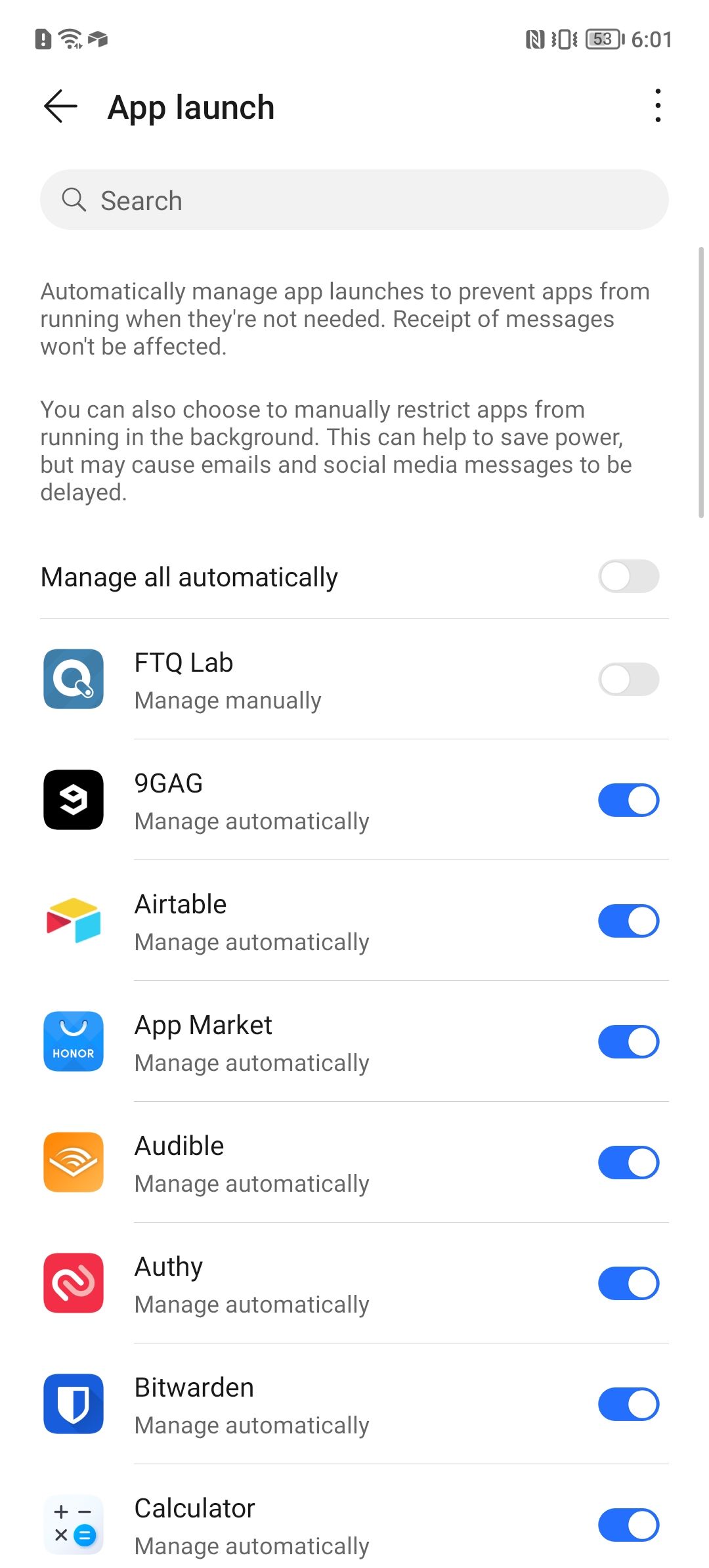
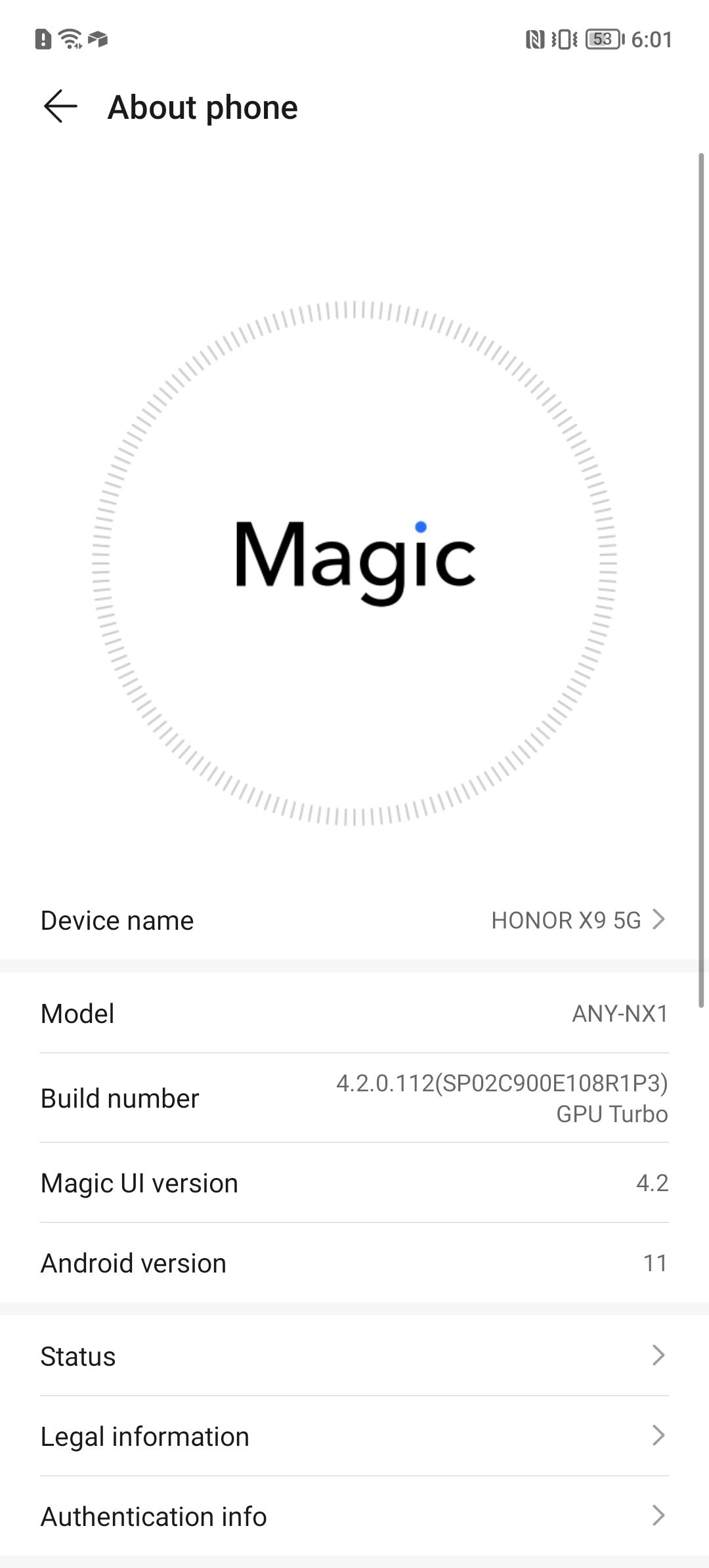

Honor, like its former parent company, is also rather aggressive with killing apps in the background to extend battery life at the cost of background features. You might not run into problems all that often, but if you’re using a service like Fairtiq that tracks your route to buy you the cheapest possible public transit ticket, you’ll run into issues pretty fast. At least it’s pretty simple to overcome this problem — just head to the battery section in system settings, select App launch, and toggle off all necessary apps. At least there is a system-wide switch for this, allowing you to disable automatic battery optimizations for all apps at once.
I was also unfortunate enough to run into an issue with a software update that ended up crashing and then factory resetting my review unit shortly before publishing this review. Honor has assured me that this has only happened because the phone shipped with pre-release software. In the process of manually updating it to the production release over-the-air, a wrong update build was pushed to the device. To be clear, this is an issue that no retail unit should ever run into, but since it happened to my unit during the review process, I did not want to leave it unmentioned.
The Honor X9 is equipped with the Snapdragon 695, which I’ve found power efficient without sacrificing too much performance. Paired with the 120Hz screen, the phone flies in everyday situations. When playing complex games like Genshin Impact or when taking video calls while multitasking, you do notice the chip struggling to keep up, though.
Battery life
The endurance provided by the 4800mAh battery is absolutely stunning. I haven’t once been able to run down the battery on a single day, even when out and about, taking photos and navigating public transit. On a day with more than four hours of screen time, I stayed above 50%. The equation changes a bit during gaming sessions, but that’s to be expected. During the review period, I’ve left the device in its default settings, meaning no changes to the display’s intelligent refresh rate switching or to the preset energy saving preferences (except for my transit app).
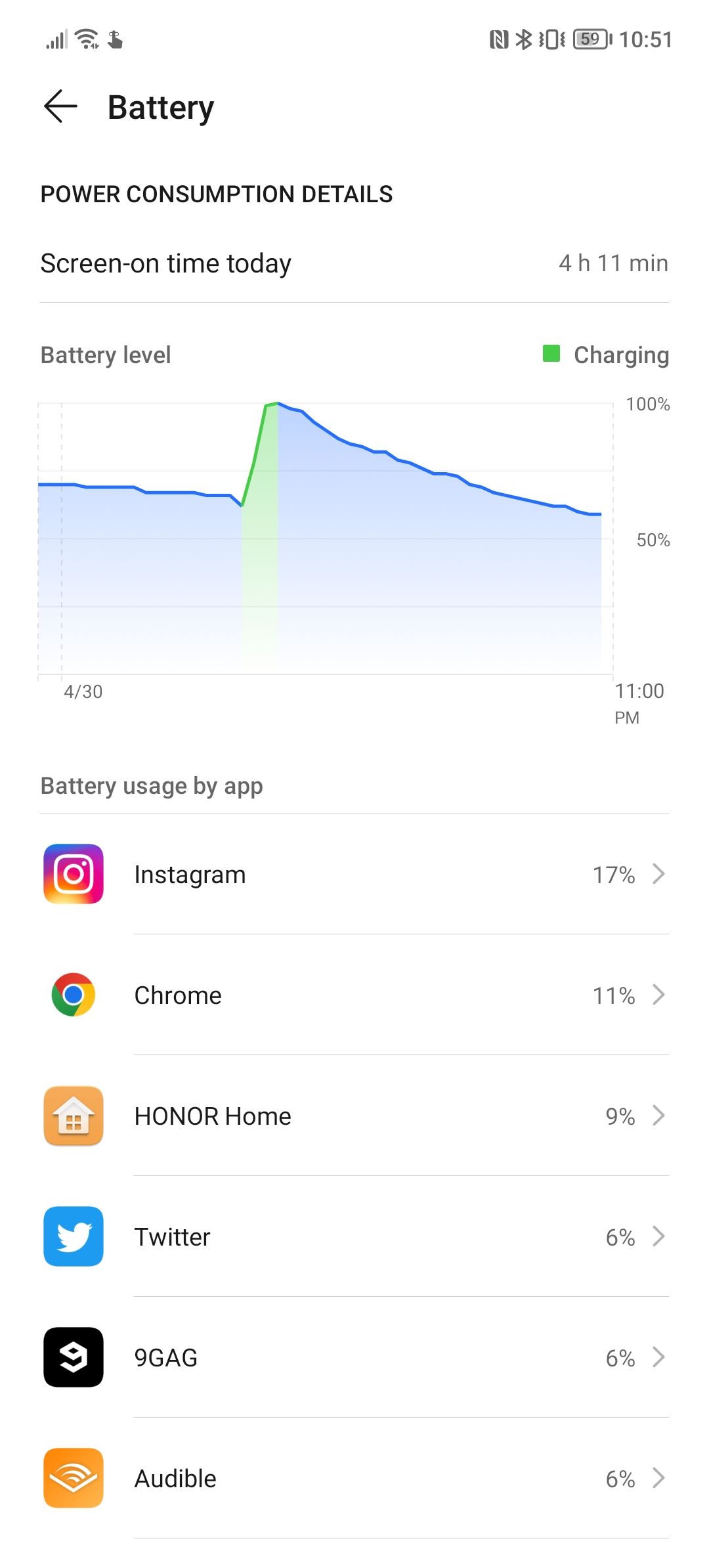
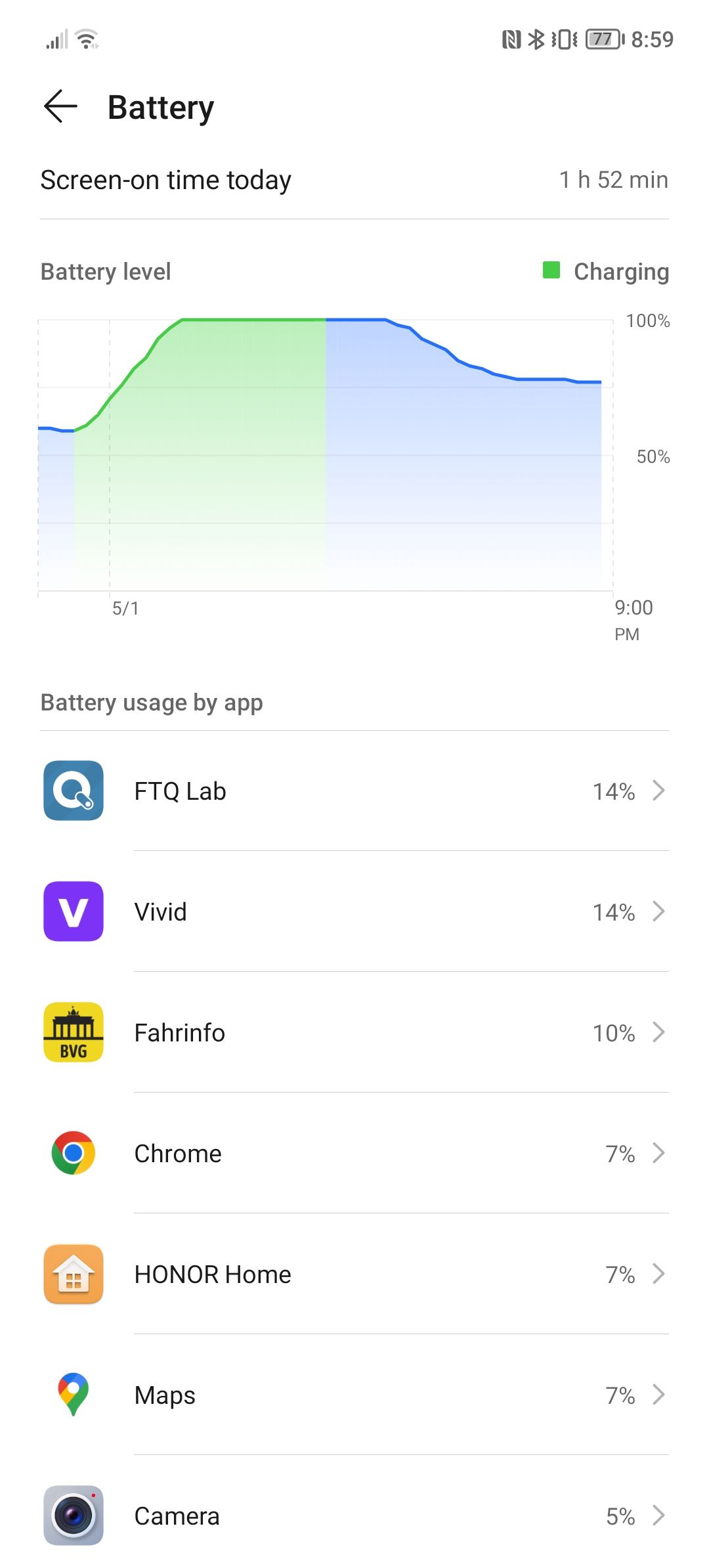
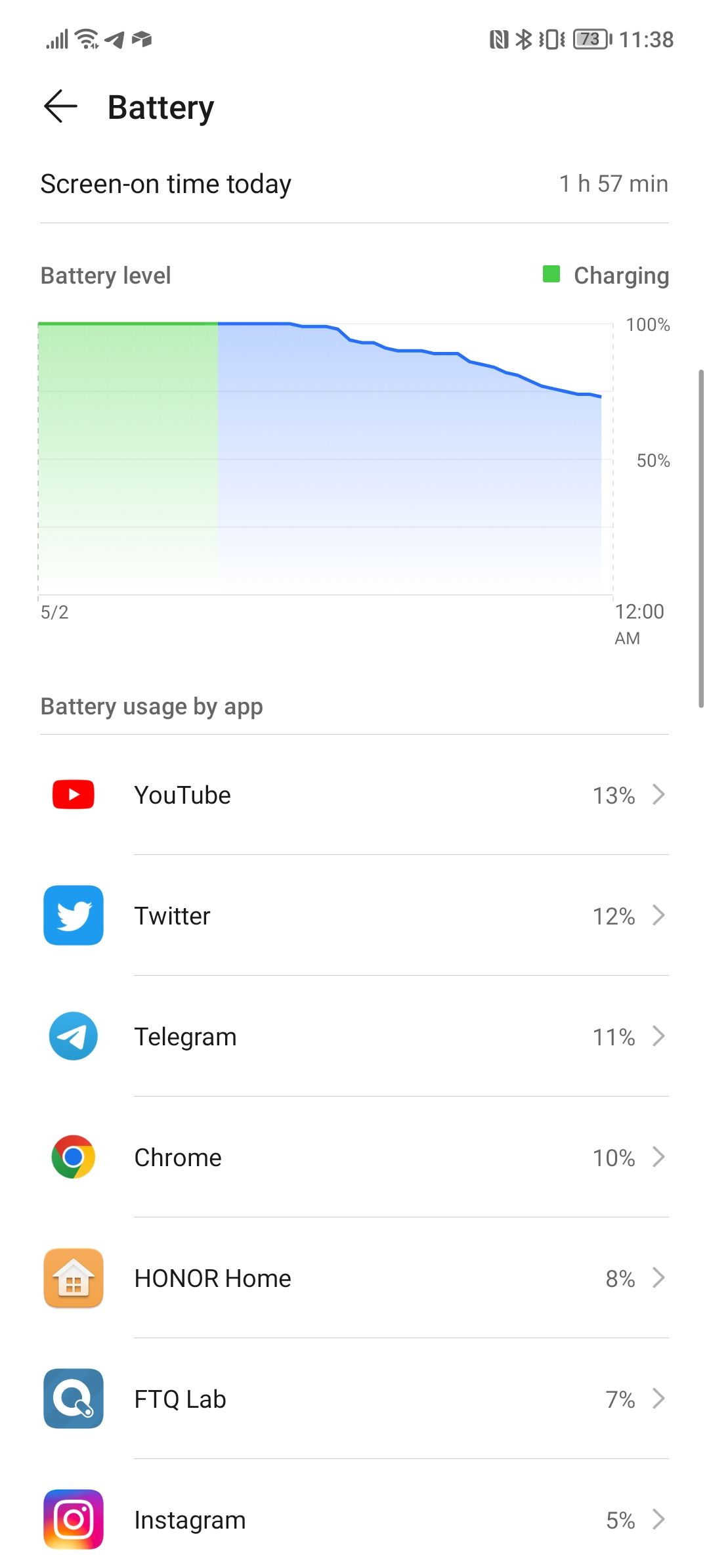
The included 66W charger promises to take the phone from 0 to 80% in just 30 minutes, and I can confirm that I always found the phone fully charged after plugging it in right when waking up, followed by my morning routine consisting of showering and eating breakfast. If you opt for this charging pattern, you should always have a fully charged phone ready to go before you need to head out.
Cameras
The phone comes with a 48MP primary and two auxiliary cameras that are really only there to bump up the total camera count — a 2MP macro and a 2MP depth sensor. On the front, there’s a 16MP punch-hole selfie.
Unfortunately, this is the one area where the Honor X9 absolutely falls flat on its face. The X9 simply doesn’t produce good images, and neither does it provide a great software experience. The camera app may be quick enough to start, but once you hit the shutter button, the viewfinder lags, and the phone takes several seconds to process the image. In less-than-ideal lighting situations, you often see a small toast message after touching the shutter, telling you to hold the phone steady while it’s “sharpening.” This seems like badly translated code for “hold on, the camera is still capturing light for the image,” but no part of the interface makes this process apparent. The viewfinder even continues to show choppy live footage instead of freezing the image like most other smartphones do. When you ignore this message and move the phone after hitting the shutter, you’ll notice double exposures and other weird glitches.












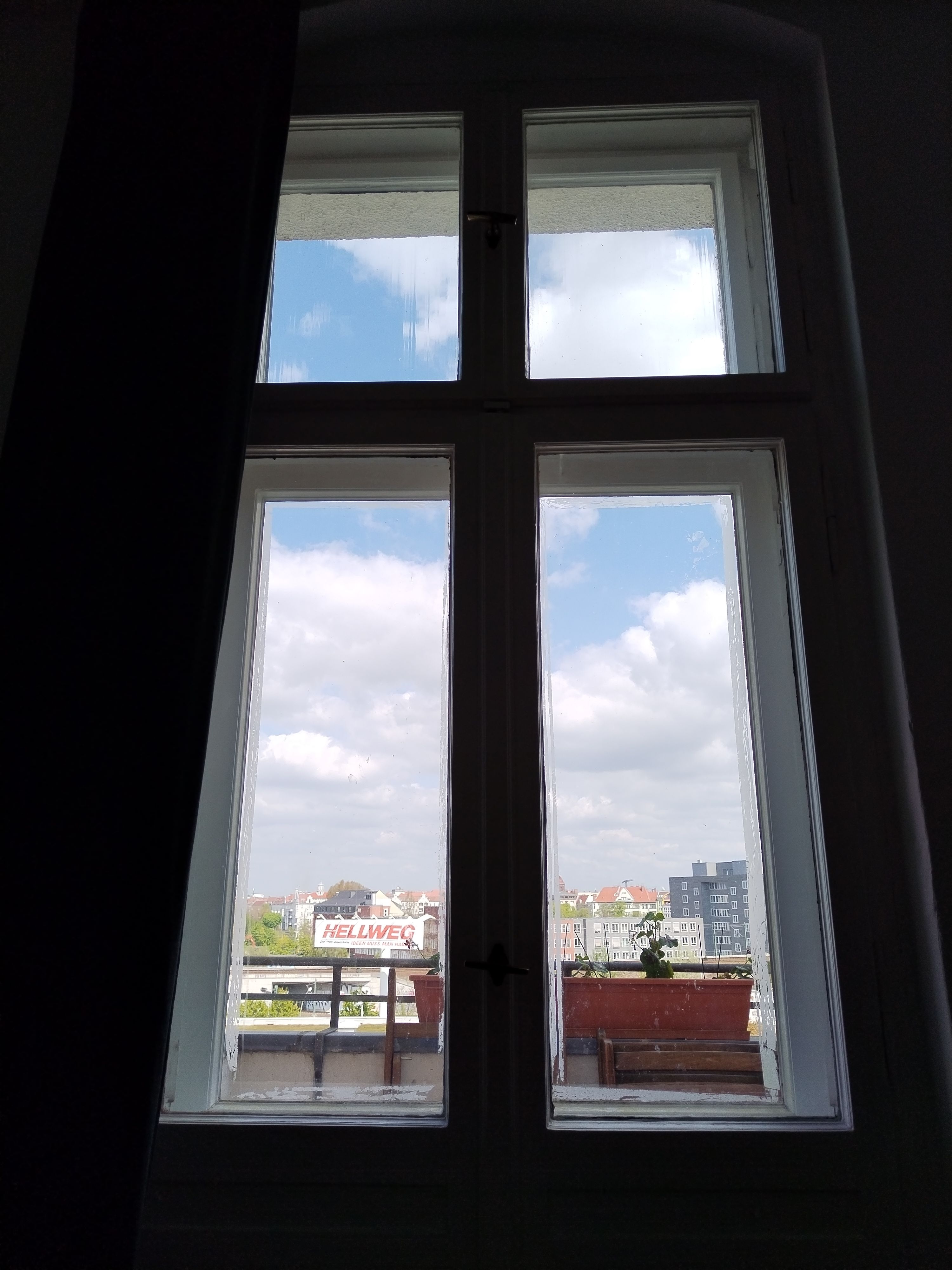
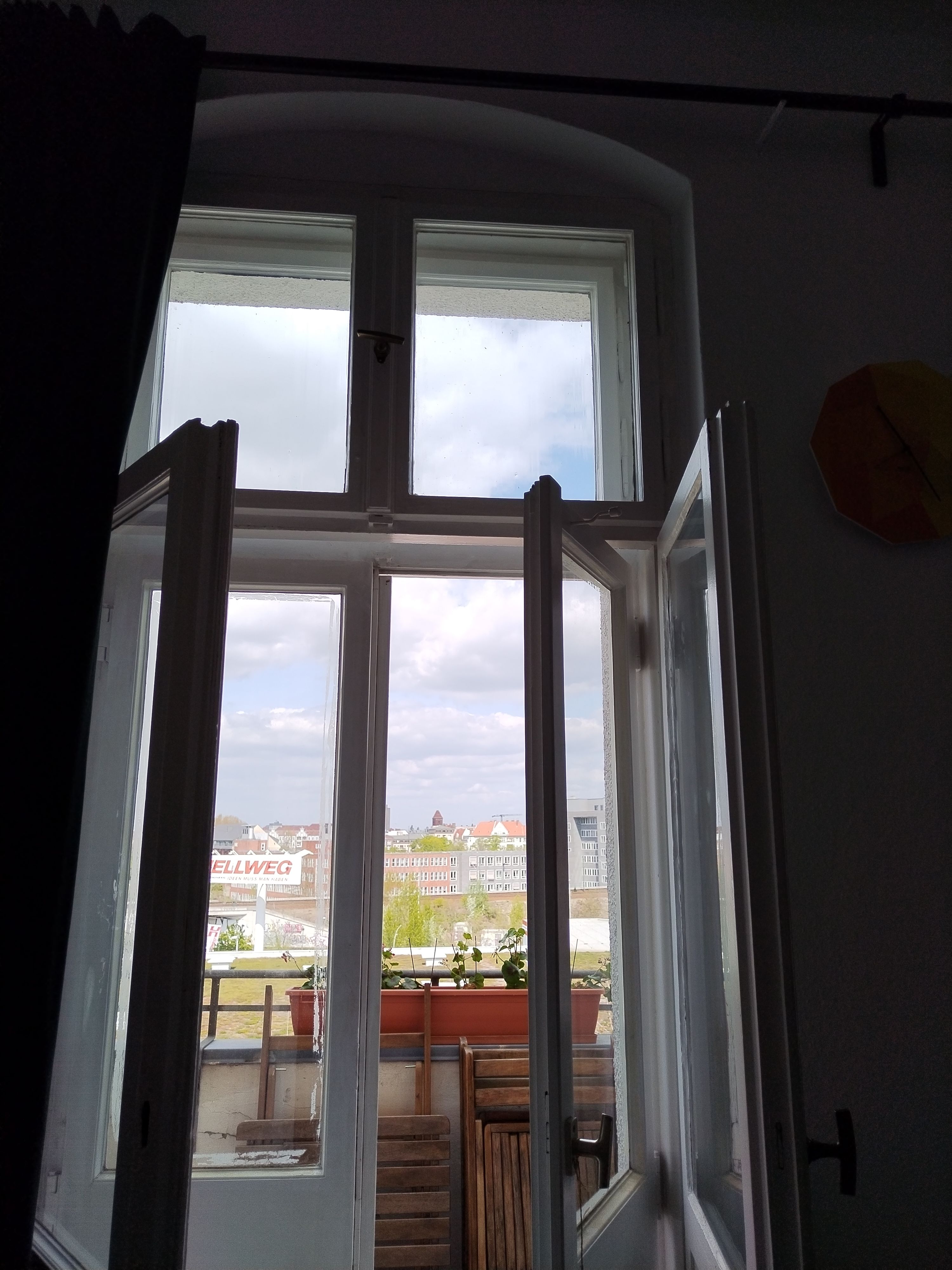
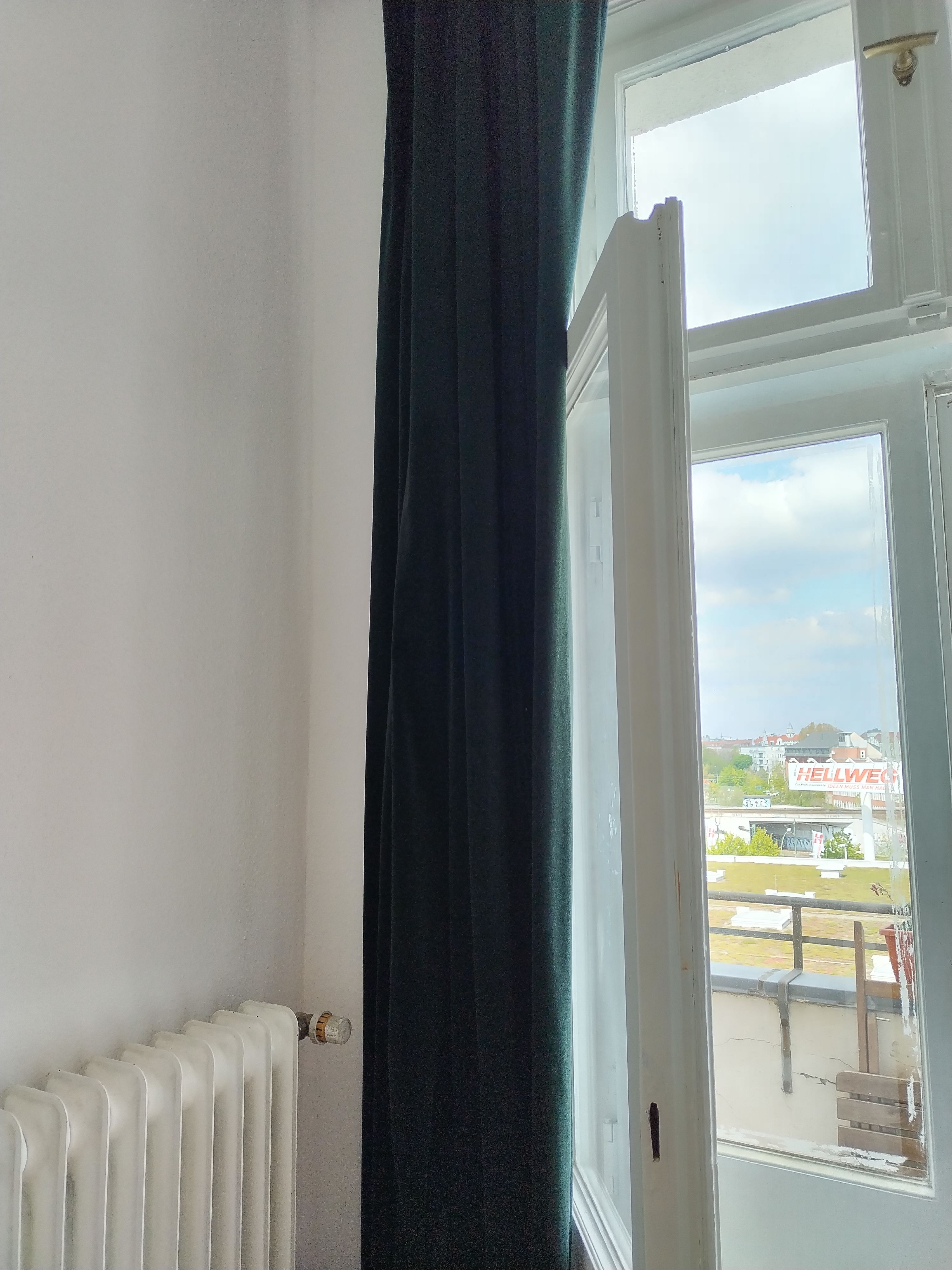



Things are okay in good lighting...
Even when you work with the clunky camera app, the results aren’t anything to write home about. While some photos are reasonably sharp when you’re shooting outside during the day, you can’t rely on it at all in more challenging situations at night or in dark places, much to my dismay visiting a White Lies concert. In the last sample image in the gallery below, the zoomed in one showing the drinks menu, you can actually see the camera software introducing artifacts during processing, making the muddy text even less legible than it already is.








...but don't expect miracles in remotely challenging situations
As for videos, the X9 supports a maximum of 1080p at 30fps. It sorely lacks optical or even just digital image stabilization, with every small movement translated into an on-screen jerk. There aren’t many more options to play with for videos other than a dual view mode that stitches videos from both the front and back cameras — a neat party trick, but nothing more.
The X9 offers a few more photography modes. There are two options for fake bokeh effect photos, with one of them simulating different aperture levels and the other a more classic portrait mode. A night mode is also included — that’s distinct from the constant “sharpening” requirement when shooting normal photos. A carousel of further options includes an HDR mode, too, which is miles better for taking photos than what the regular camera mode offers — it’s strange that Honor doesn’t make it available as a button there.
Should you buy it?
Yes, but don’t expect great photos out of it. The Honor X9 ticks a lot of boxes, but photography isn’t one of them. You really need to be prepared to be unhappy with the images produced by the X9, especially if you’re not patient enough to work around the software problems. A lot of budget phone in this price range struggle in this department, though, like the US-only OnePlus Nord N20, so Honor isn’t exactly faring any worse than the competition.
The software is another department that Honor just doesn’t nail. The home screen doesn’t feel well-thought-out with its lack of shortcuts and its tendency to throw up a different panel than expected when you hit the home button. Honor’s battery-saving measures are also utterly punishing for anyone who relies on apps running smoothly in the background, and to find out what’s wrong, you first need to know what the culprit is and then check in system settings. It’s also a bummer that it ships with Android 11, even though Android 13 is already around the corner.
That said, the Honor X9 has quite some going for it. Its battery life is impressive, and paired with quick charging, you should never be afraid of running low. The LCD screen also provides a generally great experience, with a 120Hz refresh rate you'll rarely see on phones in this price segment. And with 128GB of storage and 6GB of RAM, it is one of the more generous offerings when it comes to storage. It easily beats the much cheaper Samsung Galaxy A13 5G that’s more broadly available internationally. However, a phone like the 2021 Poco F3 is still a strong alternative at a similar price point, with a better processor and a more modern Wi-Fi radio. The OnePlus Nord 2 is now also often going for just a little more than the Honor X9. It's an incredibly crowded market, and Honor will have difficulties making a splash in this segment with the X9.
Buy it if...
- You want a sub-$400 phone that hits the most important marks
- You value battery life over everything else
Don't buy if...
- You want to take a lot of photos with your phone
- You want a recent version of Android and guaranteed long-term updates
FAQ
Q: How does the Honor X9 compare to the OnePlus Nord N20?
The Honor X9 and the OnePlus Nord N20 both fall in the same price bracket, and they have similar advantages and disadvantages. Both offer good bang for the buck, but they also both have issues in the software and camera department. The Nord N20 looks arguably sleeker, though, with a more refined design on the back, making its plastic build more forgivable.
Q: How does the Honor X9 compare to the Samsung Galaxy A13 5G?
The Galaxy A13 5G is one of the best option under $300. It offers up to four years of software support in the form of new Android releases and security patches, and its good-enough performance is paired with excellent battery life. Just like the Honor X9, its build quality is plastic-y and can feel downright cheap, though. And in contrast to the Honor phone with its 120Hz LCD, the A13 5G only has a 90Hz screen. It also has a smaller storage and less RAM. In the end, it comes down to your preferences here. Would you rather have a polished software experience or do you prefer the smoother display and more storage?

